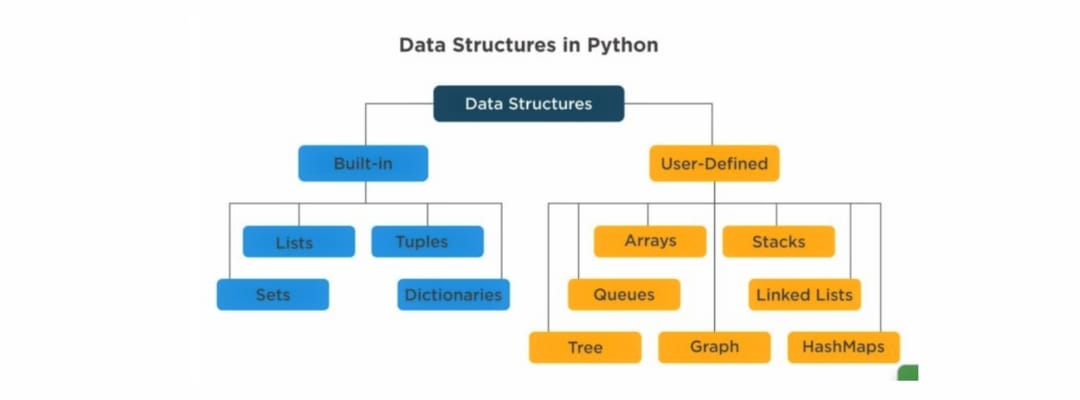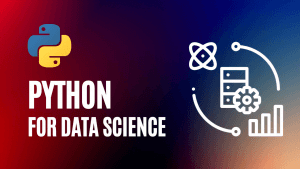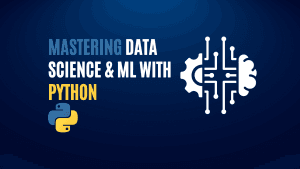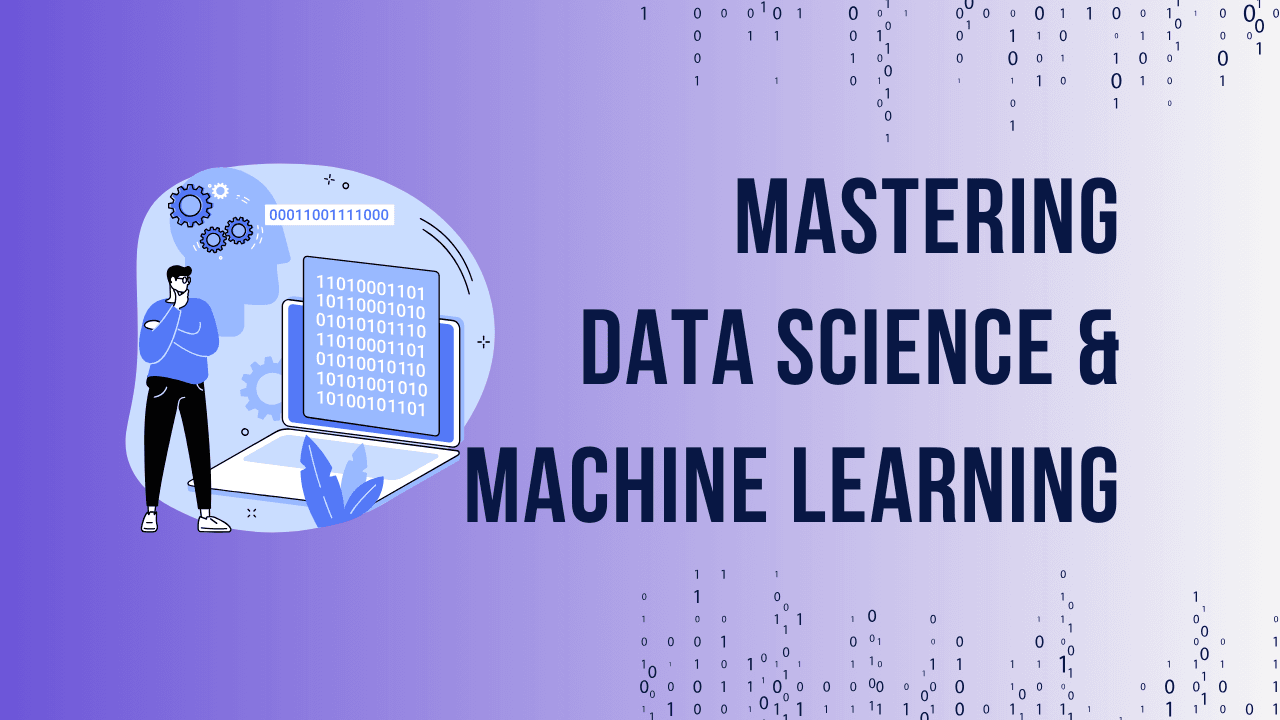Introduction
Data science is a rapidly growing field, and Python has become the programming language of choice for many professionals. But to truly excel, you need more than just basic coding skills—you need to master data structures. Why? Because data structures allow you to organize and manipulate data efficiently, which is at the heart of any data science project. Think of data structures as the tools in your coding toolbox. The more tools you master, the more problems you can solve
Ready to take your data analysis skills to the next level? Check out our comprehensive Python for Data Science Course!
Why Data Structures Matter in Data Science
When you learn Python, understanding data structures is essential. They form the backbone of efficient algorithms, which are critical for handling and analyzing large datasets in data science. Whether you’re sorting data, searching through databases, or optimizing your code, the right data structure can make your program run faster and more efficiently. Without a solid grasp of these concepts, your coding skills might lack the necessary depth for complex data science tasks.
The Basics: Lists, Tuples, and Dictionaries
Before diving into more complex structures, it’s crucial to understand the basics. Lists, tuples, and dictionaries are fundamental data structures in Python programming.
- Lists are ordered collections that can hold items of different types, making them versatile.
- Tuples are similar but immutable, meaning once they’re created, they can’t be modified.
- Dictionaries use key-value pairs, making them ideal for scenarios where you need to associate one piece of data with another.
These structures will be your building blocks as you learn Python and delve deeper into data science.


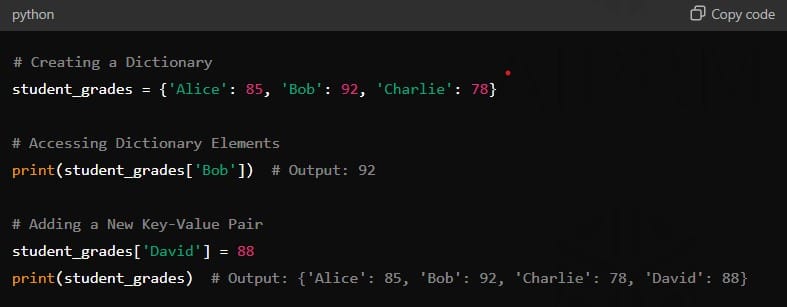
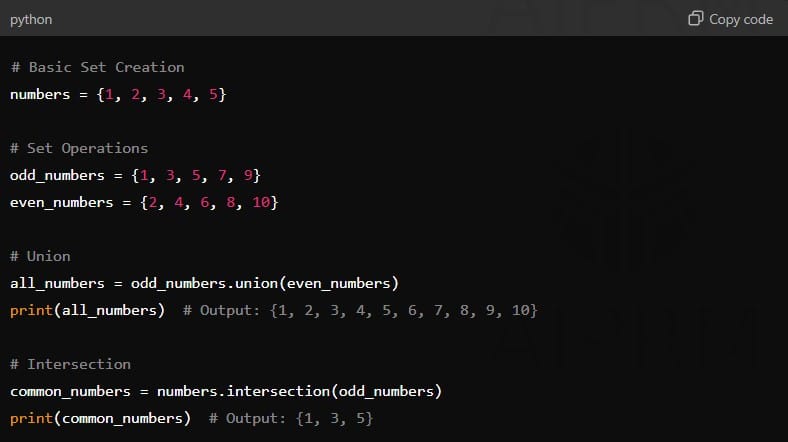
Mastering Lists for Data Science
Lists are perhaps the most commonly used data structure in Python tutorials. They allow you to store and manipulate data in a flexible, ordered way. For example, you can use lists to store datasets, iterate over them, or perform operations like filtering and sorting. In data science, lists can be used to handle sequences of data such as time series or feature sets in machine learning.
One of the key aspects of mastering lists is understanding list comprehensions—a powerful tool that lets you create new lists by applying an expression to each item in an existing list. This not only makes your code cleaner but also faster, which is crucial when working with large datasets.
Ready to take you Data Science and Machine Learning skills to the next level? Check out our comprehensive Mastering Data Science and ML with Python course.
Tuples: The Immutable Data Structure
Tuples are another essential data structure you’ll encounter as you learn Python. Unlike lists, tuples are immutable, meaning once you create a tuple, you can’t change its content. This might sound like a limitation, but it has its advantages. For example, because tuples are immutable, they can be used as keys in dictionaries, whereas lists cannot. In data science, tuples are often used to store fixed collections of data, such as coordinates or RGB color values, where the order and immutability are important.
Dictionaries: Key-Value Pairs
Dictionaries are a unique and powerful data structure in Python programming. They allow you to store data in key-value pairs, making data retrieval faster and more efficient. Imagine you have a dataset where each entry has a unique identifier—dictionaries are perfect for storing and accessing this type of data.
In data science, dictionaries are commonly used to store configurations, lookup tables, and any other scenario where quick access to data is needed. Mastering dictionaries will significantly enhance your coding skills, allowing you to handle data in more complex and efficient ways
Working with Sets in Python
Sets are an often overlooked but highly useful data structure in Python. Unlike lists and tuples, sets are unordered collections of unique elements. This means that sets automatically remove duplicates, which can be incredibly useful when you’re working with large datasets and need to ensure data integrity.
For example, if you have a list of data points and you want to remove duplicates, converting the list to a set is a quick and efficient way to do so. Sets also support operations like union, intersection, and difference, making them powerful tools for data comparison and manipulation.
Understanding Linked Lists
Linked lists are a more advanced data structure that you’ll encounter as you delve deeper into Python programming. Unlike arrays, linked lists consist of nodes, each containing a data element and a reference (or link) to the next node in the sequence. This structure allows for efficient insertion and deletion of elements, which is especially useful in scenarios where you need dynamic memory allocation.
In data science, linked lists can be used to manage sequences of data that change frequently, such as in simulations or real-time data processing. While they might be more complex than lists or dictionaries, mastering linked lists will give you a deeper understanding of how data structures work under the hood.
Trees and Graphs: Advanced Structures
When you’re ready to take your Python coding skills to the next level, it’s time to tackle trees and graphs. These advanced data structures are used to model hierarchical and networked data, respectively.
- Trees are used in scenarios like organizing data hierarchically, such as file systems or organizational charts.
- Graphs are used to model relationships between data points, such as social networks or web page links.
In data science, these structures are essential for tasks like decision tree algorithms in machine learning or analyzing network data. Understanding how to implement and manipulate trees and graphs will open up new possibilities in your data science projects.
Optimizing Python Code with Data Structures
Choosing the right data structure is only part of the equation—you also need to know how to optimize your code for performance. This involves understanding the time and space complexity of different data structures and algorithms, which can have a significant impact on the efficiency of your code.
For example, while a list might be suitable for small datasets, a more complex structure like a hash table (implemented in Python as a dictionary) might be more efficient for larger datasets. As you learn Python, focusing on optimization techniques will help you write code that is not only correct but also efficient, which is critical in data science.
Practical Python Projects to Reinforce Learning
The best way to master data structures in Python is through hands-on practice. Working on Python projects that require you to apply these structures will reinforce your learning and give you practical experience.
Consider starting with small projects, such as building a contact book using dictionaries or analyzing a dataset using lists and sets. As you gain confidence, move on to more complex projects, like implementing a search algorithm using trees or analyzing social network data using graphs.
Learning Resources for Python
There are countless Python learning resources available to help you on your journey to mastering data structures. From online tutorials and coding challenges to books and video courses, you can find materials that suit your learning style and pace.
Some recommended resources include:
- Python tutorials on websites like Codecademy or Real Python.
- Python basics books such as “Automate the Boring Stuff with Python” by Al Sweigart.
- Python projects on GitHub, where you can find and contribute to open-source projects.
These resources will not only help you Learn Python but also deepen your understanding of data structures and their applications in data science.
Conclusion: The Path to Mastery
Mastering data structures in Python is not just about memorizing concepts—it’s about understanding how and when to use these tools to solve real-world problems. As you continue to learn Python and apply these data structures in your projects, you’ll find that your coding skills and efficiency improve dramatically. Remember, every expert was once a beginner, and with persistence and practice, you can achieve mastery.
FAQs
1. What are the most important data structures to learn in Python?
The most important data structures include lists, tuples, dictionaries, sets, linked lists, trees, and graphs. Each serves a unique purpose in programming and data science.
2. How do data structures impact data science?
Data structures impact data science by determining how efficiently data can be stored, accessed, and manipulated, which is crucial for handling large datasets and performing complex analyses.
3. Can I learn Python data structures without prior coding experience?
Yes, you can learn Python data structures even if you’re new to coding. Start with the basics like lists and dictionaries, and gradually move on to more complex structures like linked lists and trees.
4. What resources are best for learning Python data structures?
Some of the best resources include online tutorials, books, and Python projects on platforms like GitHub. Courses on websites like Codecademy and Coursera also offer structured learning paths.
5. How long does it take to master Python data structures?
The time it takes to master Python data structures varies depending on your background and dedication. With consistent practice, most learners can gain a solid understanding within a few months.
Ready to take you Data Science and Machine Learning skills to the next level? Check out our comprehensive Mastering Data Science and ML with Python course.

